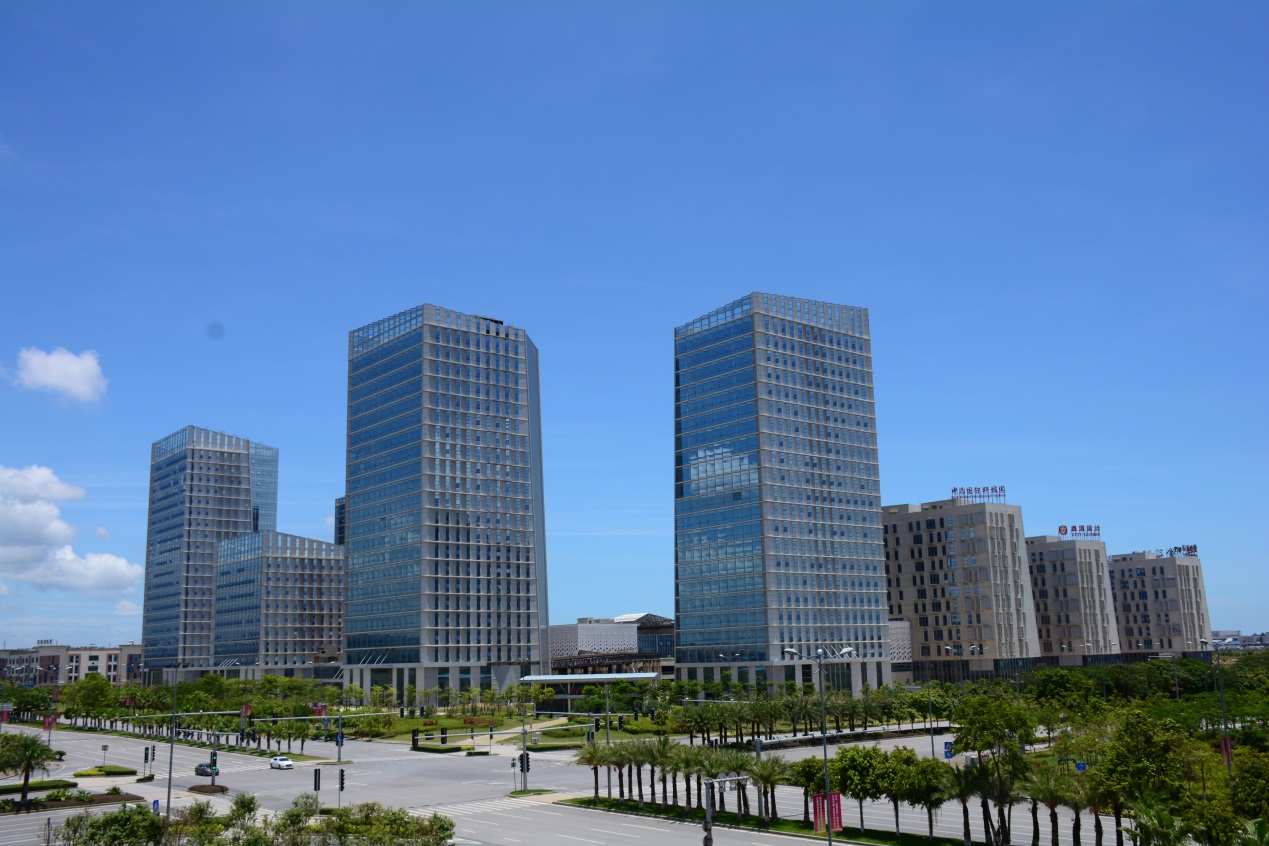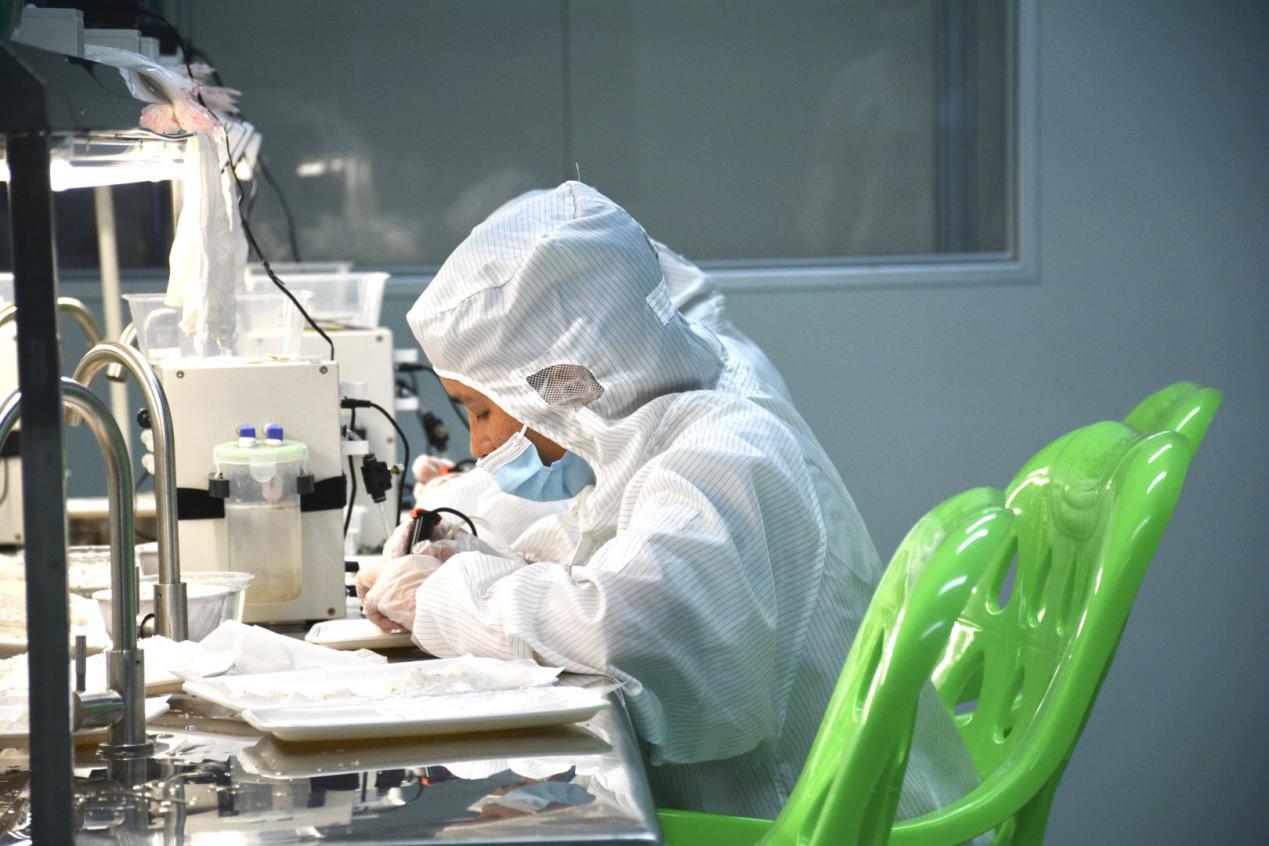

Walking into China-Malaysia Qinzhou Industrial Park (CMQIP), and seeing the buildings with red tops and white walls, palm trees, and the golden decorations featuring Malay ethnic custom, you feel as if you were in Malaysia, but all signs in Chinese remind you that you are still in China. The integration of Chinese and Malaysian elements into the park’s architectures is one of the most direct expressions of CMQIP as an international cooperation park.
The core of CMQIP, the flagship project of the cooperation between the two countries, is the production capacity cooperation between the two governments and the optimal allocation of resources between Chinese and Malaysian enterprises.
Governments’ supports make smooth cooperation
CMQIP is the third industrial park jointly built by the Chinese government and a foreign government following the China-Singapore Suzhou Industrial Park and the China-Singapore Tianjin Eco-City. From the important leaders of the two countries attending the foundation stone laying ceremony to giving strong support to the development of the park, the mode of “Two Countries, Twin Parks” between China and Malaysia has been built with a high starting point and a large pattern. On the 45th anniversary of China-Malaysia diplomatic relations, Chinese President Xi Jinping pointed out during the meeting in Beijing with the then Malaysian Prime Minister Mahathir Mohamad, we should make the “Two Countries, Twin Parks” bigger and stronger, make it an important node of the New Land-Sea Corridor, and promote the connectivity and development of the two countries and regions.
To strengthen the linkage of the “Two Countries, Twin Parks”, the Chinese and Malaysian governments have specially established the Joint Cooperation Council of the China-Malaysia “Two Countries, Twin Parks”. Under the guidance of the council, the “Two Countries, Twin Parks” have held a series of joint promotion and investment activities over the past few years, strongly promoting the signing of a number of projects. At the same time, members of the council work together to solve the difficulties encountered in the process of building the two parks and attracting investment, effectively promoting the development and construction of the “Two Countries, Twin Parks”.

In 2019, the Qinzhou Port Area of China (Guangxi) Pilot Free Trade Zone (hereinafter referred to as Qinzhou Port Area) was officially inaugurated, the government of Guangxi Zhuang Autonomous Region and the Qinzhou government have integrated CMQIP, Qinzhou Free Trade Port Area and Qinzhou Port Economic and Technological Development Zone to achieve the coordinated development of the “three zones”. CMQIP have ushered in a new “free trade era”.
To strengthen the daily contact and interact development of “Two Countries, Twin Parks”, the Management Committee of Qinzhou Port Area has specially set up the joint council secretariat and issued policies to promote the development of the Malaysian Development Consortium in Qinzhou Port Area, mobilizing the enthusiasm of Malaysia’s participation in the construction of the Qinzhou Port Area from a policy perspective. It also launched a study on the construction of an upgraded version of the China-Malaysia “Two Countries, Twin Parks”, to push forward the implementation of five new measures on pilot financial innovation reform within the CMQIP, paving the way for the cooperation between Chinese and Malaysian enterprises.
Enterprises’ participation makes vigorous cooperation
For the parks cooperated by two countries, finding the advantages of both sides to cooperate can reap the benefit of “one plus one greater than two”. Since its construction, CMQIP has focused on competitive Malaysian industries such as edible bird’s nest, halal food and palm oil processing, made production capacity cooperation between the two countries a core task of the park’s development, and became a hot place for Chinese and Malaysian enterprises to invest.
At present, the edible bird’s nest processing and trade base, covering 80 mu and with a total investment of RMB 690 million yuan, has become a highlight of promoting international production capacity cooperation in the CMQIP. There are 12 domestic and foreign edible bird’s nest enterprises in the base, among which 10 have the qualification of designated processing enterprises of raw imported bird’s nest by General Administration of Customs, P.R.China, accounting for 70% of China’s total.
Guangxi Free Trade Zone Sabah Bird’s Nest Co., Ltd (hereinafter referred to as Sabah Bird’s Nest) is one of the early enterprises located in the base. Zhang Yuhua, Chairman of the Board and President of the company, is a Malaysian Chinese who owns 250 swiftlets houses in Malaysia. He ensured high-quality exported bird’s nests through measures such as building swiftlets protective base in Malaysia and standardizing production.

“Bird’s nests are seen as the national treasure of Malaysia. Our bird’s nests are advantaged in origin and resource, as well as boasting a good platform — the CMQIP. I hope we can provide good bird’s nests for Chinese consumers to eat.” Zhang Yuhua said in the interview that, the CMQIP has built the first bird’s nest industry development platform featuring comprehensive industrial chain and cluster type, and China Certification & Inspection Group and CMQIP have carried out in-depth cooperation in origin-tracing services in edible bird’s nests. These have provided a unique and excellent environment for the healthy development of the CMQIP bird’s nest industry. It has also become one of the reasons why Zhang chose to invest in bird’s nests in the CMQIP.
There are many bird’s nest enterprises similar to Sabah Bird’s Nest in the CMQIP. It is reported that over 50 bird’s nest processing and deep processing enterprises can be introduced after the completion of the entire bird’s nest processing and trade base, with an annual processing of bird’s nest up to 500 tons and an annual output value up to RMB 10 billion yuan.
In addition, the CMQIP actively explores the production capacity cooperation in halal food, palm oil processing and other areas. To further support the upgrading of China-Malaysia international production capacity cooperation, the CMQIP has also invested RMB 1.56 billion yuan in building a Malaysian SME cluster area, and has actively promoted the construction of cross-border industrial chains and supply chains, supported the trade of bird’s nest, durian, palm oil and other Malaysian products. Production capacity cooperation under the “Two Countries, Twin Parks”is gradually upgraded in the multi-level interaction between China and Malaysia.
More partners make wider cooperation
The booming of the CMQIP have greatly boosted the confidence of investors. Companies from Guangxi and Malaysia have come in for investment and entrepreneurship. Guangdong-Hong Kong-Macao Greater Bay Area and many provinces and cities in southwest China have also aimed at the prospect of cooperation between China and Malaysia, and even China-ASEAN cooperation, and have carried out investment and developed businesses in the CMQIP.
As an important economic province in western China, Sichuan has been closely cooperating with ASEAN in economic and trade. With China becoming the largest trading partner of ASEAN, both Sichuan and Guangxi are more willing to cooperate on the construction of the New Western Land-Sea Trade Corridor, the development of ASEAN market, etc. In September 2018, Sichuan and Guangxi signed the Framework Agreement of Deepening Sichuan-Guangxi Cooperation and Jointly Promoting the Construction of the Southward Opening-up Channel, proposing to jointly accelerate the planning and construction of the Sichuan-Guangxi Industrial Cooperation Park. And the Sichuan-Guangxi International Productivity Cooperation Industrial Park (hereinafter referred to as the Sichuan-Guangxi Park) just landed in the CMQIP.
Why was the Sichuan-Guangxi Park settled in the CMQIP? Cai Zhen, General Manager of Guangxi Chuangui International Investment and Development Co., Ltd., which invested and built the Sichuan-Guangxi Park, said in an interview with our reporter that the enterprise is mainly engaged in the supply chain and its integrated services. Knowing that Qinzhou Port has the conditions for sea-rail intermodal transport and the CMQIP enjoys preferential policy and serves as a large platform, the company decided to settle here. In terms of enterprise functions, Cai hopes to build a new frontier platform for Sichuan enterprises to enters the ASEAN market relying on the CMQIP. “For example, Deyang city in Sichuan province is a city featuring heavy industry and ASEAN is an important market for it. The traditional mode of freight transport mainly relies on road transport. “Through the sea-rail intermodal transport of the New Western Land-Sea Trade Corridor, the enterprises can greatly reduce the transportation costs,” he said.

When the reporter came to see the Sichuan-Guangxi Park, the main building inspired by the shape of the Chinese character “Chuan” and the circular longan has been completed. The first phase of the project is expected to be completed and put into operation in October 2021. Earlier, on June 24, 2021, three relevant companies signed intent agreements to enter the park, marking a solid step from the construction phase to the operation phase of the project.
Speaking of future development, Cai Zhen said that Sichuan-Guangxi Park will make use of its rich Sichuan business resources, help attract investment to the park, and seize the new opportunities in the construction of “New Land Corridor”, with a focus on developing international supply chain market facing ASEAN, import and export commodities entrepot trade, bonded trade, and cross-border e-commerce.
For ASEAN countries such as Malaysia, the western hinterland of China such as Sichuan province is also an attractively big market. As more partners come ti invest in the CMQIP, platforms like Sichuan-Guangxi Park will not only help Chinese companies “go global”, but also become an important fulcrum of the the “bring in” strategy for ASEAN companies to explore the broader Chinese market .
From highlighting Malaysia’s advantageous industries to making good use of Malaysia’s cooperation resources, and to tailor-made financial innovation practices for China-Malaysia international cooperation, the CMQIP is the flagship project of cooperation between the two countries. The “Malaysian element” is its unique advantage and the cornerstone of its deepening international cooperation. With more attention paid to the ASEAN market, the development of the CMQIP is maturing day by day. We believe that there will be more people with insight coming for the CMQIP.
桂ICP备14000177号 Copyright@2006-2013 Guangxi China-ASEAN Panorama Magazine Agency Co., Ltd. All Rights Reserved